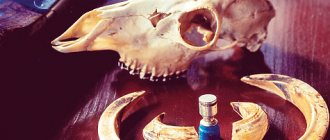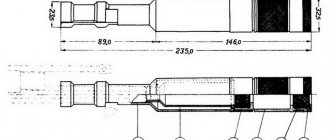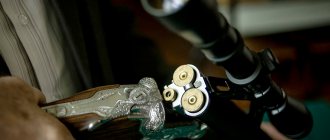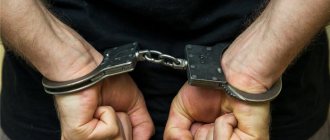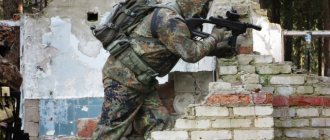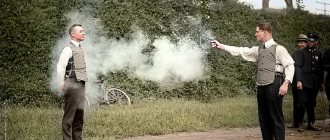Livestock » Horses
0
2186
Article rating
Kira Stoletova
In the modern world, a carriage tucked into horse harness on city streets causes a storm of emotions. It’s as if we are finding ourselves in a fairy tale; there is nostalgia for the times when such carts scurried along the streets of villages and villages.
Horse harness
The European horse is entertainment and pleasure, and in the 19th century it was an indispensable assistant to man, the main breadwinner in a peasant family. Plowing the fields, transporting people, goods - all the hard work fell on her. Horses were the first assistants in conquering lands, transporting military equipment, traveling, etc.
Those who kept a horse on their farm understood that it would help provide for their family. Every person, regardless of age, knew that to prolong the life of a horse, not only constant care is important, but also good equipment that does not overload the neck, high-quality harness that is correctly selected for the size of the horse. What types of horse harnesses are there? Is it possible to make them yourself? What criteria should you pay attention to when choosing a horse control device?
What is horse harness
Terms such as horse harness or harness refer to the totality of all devices that provide the ability to control an animal while sitting behind it in a cart. In other words, this name implies a set of belts with a bridle and reins, put on the body of the animal and allowing you to control the trajectory of the horse’s movement. The word harness in the dictionary has the following synonyms: harness, harness, harness.
People who masterfully own a team of horses are called:
- coachman;
- coachman;
- sledding;
- cab;
- driver, etc.
Only they have the right to control the horse through the reins attached to the bridle.
In order not to cause pain to the animal when riding, you need to correctly select and fit all the elements that make up the device. If the belts are not tightened correctly, contact with the body can result in soft tissue burns or other damage. As a result, the horse's performance will decrease.
Protective equipment for horses
blankets
They are a universal invention that allows the animal to feel warm and dry. They are used when transporting animals or in the stables if temperature changes are expected. The fabric is made from warming woolen fabric. To secure the blanket on the horse's body, there are special fasteners and belts.
A blanket is a protective blanket that is used for heating during the cold season. When caring for a horse, it may be washed frequently, which reduces the amount of protective fat, and therefore the animal will need additional protection.
Winter blanket
Blankets are sewn taking into account the climatic conditions and physiology of animals. There are a huge number of different blankets suitable for all kinds of life situations:
- walking;
- night;
- rain;
- stall;
- working;
- winter
It is recommended to have several options for horse blankets, for example, winter, stall and working.
Bandages
They serve to protect the limbs and are sewn from cotton fabric; they protect muscles and tendons from stretching. In winter, it can be used as a means of warming the horse's legs. For training, knitted or crepe bandages about 8 cm wide are used. To prevent blood circulation from being disrupted, it is important not to pinch the limbs when bandaging. A separate requirement is that there should be no gaps between the layers of bandages where dirt or soil particles can get in.
Bandages
Boots
Also serve as a remedy against injuries to the limbs. Can be worn over bandages or simply on the metacarpus area. There are special fasteners or Velcro for fixation.
Saddle pad
Used when saddling a horse and placed directly on the back. Performs a protective function. For production, cotton fabric with a soft filler is used.
Origin and history
According to archaeologists, the first horse-drawn carriage was invented by man around 2000 BC. e. Since the ancient carts were simple and primitive, it is easy to guess that the harness was also suitable for them.
The Persians were the first to notice the beauty of the harness. When they began to use four mares harnessed to closed carts, then the idea arose to make a harness for the horse, which was both beautiful and allowed the load to be evenly distributed when riding.
Later, horse-drawn carts appeared among the Greeks (where much attention was paid to their manufacture). The richer the owner, the more colorful the horse harness was. The Romans had widespread chariots equipped with the simplest designs, but the details of the harness were luxurious, trimmed with gold, and decorations with precious stones were also used. In the arenas, such a team of horses could be seen from afar.
In the middle of the 19th century, due to the appearance of carriages and carriages on the streets, the beauty of horse harnesses returned to fashion. Nowadays, the harness on the troika of horses is decorated with bells. It is not known exactly where this tradition came from, but according to one version, they were hanged so that the coachman (coachman) would not fall asleep on a long journey.
Today, horses are used in private households, in sports and competitions, as well as for entertainment.
Is it possible to do without an arc?
Some people don't buy poles because they cost a lot of money, but they cause a lot of harm to their horse. Over time, the animal will develop wounds and, due to constant bruises, it will be difficult for him to pull carts.
Considering this, arcs are simply necessary. If you don't have the money to buy it, then try to make it yourself. After watching the video and reading a lot of information on this topic, you will be able to make a high-quality and durable arc. Even if you don't succeed in making the part the first time, don't be discouraged and try again. You can try to make an arc on a small block of wood to understand the manufacturing principle.
What does the harness consist of?
The elements of the harness in each outfit are approximately the same, so it makes sense to consider each element of the harness:
- Clamp. Perhaps this is the most important part of the harness, the task of which is to evenly distribute the weight of the cart over the neck and shoulder spine of the horse. This element is placed near the withers and along the base of the neck. It should not interfere with the horse's movement and breathing properly. The dimensions of the collar are chosen not to be too wide or long, so that damage does not appear on the horse’s body. The fastening, called the top yoke (belt bow), requires constant checking to avoid breaking.
- Bridle. The bridle is put on the head. It can be with one or more bits or without them.
- Harness. The use of harnesses when moving the mare ensures that the clamp is held tightly. Harness means leather longitudinal, transverse and slope belts.
- Rein.
These harness pieces provide remote control of the horse. The set includes two reins, left and right (one longer than the other). Their edges are connected to the bits.
The parts in question are manufactured in the form of strong, smooth (without rings or additional fasteners) belts. At the end of the left rein there is a finger loop, at the end of the right there is a buckle or hole.
- A girth is a wide, durable strap for securing a saddle.
- The equipment also has an emergency latch; in case of danger, the pin is removed and the horse is disconnected from the crew.
- Blinders are placed over the eyes without touching them. These parts of the harness are needed to eliminate distractions for the horse and to protect the crew.
- Shore holders to prevent the blinkers from fluttering due to the air flow (needed to avoid additional agitation of the horse).
- It is better to decorate the headband of horses with one motif so that the group in front looks harmonious.
This is what the device used by the one who drives a team of horses consists of.
Types of harnesses
Over time, the design of the harness changed several times (one arc was added, another was removed, transformed), depending on the use and the number of animals harnessed to the cart. Currently, there are 3 types of harness for horses:
- Agricultural. The team consists of one individual or a pair of horses.
- Transport. They have many horses (three or more). Use - transportation of goods, cargo, people.
- Exit or ceremonial (for example, in summer - for weddings, in winter - for sleigh rides). They used a different number of horses (2 or more).
Consequently, depending on the purpose of the harness, they began to manufacture it (it is necessary to strengthen the main part, decorate the other, etc.).
Clamp - main traction force
The collar in any equipment is an element that transfers the draft force of a horse or other livestock to a sleigh, plow, cart, etc. As before, today they are made in a variety of sizes - it all depends on the type of harness.
Be sure to read:
Horse hoof care: nutrition, cleaning, how to choose bedding
To measure the length, measure the distance from the top of the inner gasket to the beginning of the pliers. The width is determined by the holes placed that allow the tugs to pass through.
The yoke in double-window and single-horse systems may differ. In double-horse teams they are equipped with lobes, in single-horse teams they are equipped with tugs.
Parts included:
- pillow;
- soup;
- 2 ticks;
- clamp;
- 2 tugs;
- lining;
- gort;
- tire.
A small yoke can choke a horse, while a too large one will dangle, rubbing the animal’s neck.
Types of harness
Currently, the following types of harness exist:
- Line by line. This model does not have a drawbar or shaft, and there is also no wooden part (arch). The devices in question are most often equipped with an additional hand brake, since when moving forward it is impossible to hold the cart (traction is produced by a clamp and lines).
- Combined. This variation is adapted to large and strong horses (sometimes it is also used for bulls). Usually they use 6-8 horses, each of which performs its own function (they go one after another). For example, the drawers are harnessed to the root horses. Their job is to turn the cart. The Korenniki are the strongest and tallest, which allows them to hold back the crew. The outriggers are placed at the beginning, which set the pace and trajectory.
- Tachanochnaya. Today it looks a little outdated. In the center, a pair of working horses are harnessed to a drawbar, the side horses are harnessed to lines, carts are not used. The lines are attached to the vags.
- Line-by-line-drawbar. The main thing in this harness is the drawbar (used as a movement regulator and for turning the cart). Suitable for single and double horse harnesses.
- Zug. Six work horses are used, the horsemen are attached to the drawbar, and the rest of the horses in the harness are outriggers.
- Single-horse (European) harness with arc and without arc. Both types are harnessed to one horse. In an arcless harness, the entire weight of the cart is provided by the harness.
There are 2 types of harnesses: bib and collar. The collar is made according to the size of the animal, and the bibs are adjusted to the horse using buckles.
Now you know what each type of harness consists of, therefore, you can easily select harness for one or another purpose.
It is cheaper to buy a fully finished harness. But it happens that not all items are suitable for your animal, so it is recommended to buy parts separately.
DIY making
If you are interested in how to make a cart with your own hands, you must first read the instructions, prepare the appropriate tools and materials, and complete diagrams and drawings. Only after this can you make a horse cart with your own hands. The algorithm of actions is as follows:
- First you need to complete the chassis of the entire structure. The chassis consists of a welded solid frame and axles for the wheels. You can carry out welding yourself, but if you do not have the necessary experience and skills, then it is best to entrust this work to a specialist. The axles and frame can be made from a profile: then they will be solid. Another option is pipes with thick walls.
- Now you need to make a stationary axis, which will be located at the rear. Then make the one that will be in front. It should turn on the pin (2 washers should be fixed).
- Before you finish the axle that will be located in the front, you need to decide on the type of cart. If it is a drawbar, then you will have to additionally make a special clamp for the drawbar. The shafts must be welded to the front axle, and a special clamp will also be needed. In other words, the shafts will not be removed, but they must be positioned movably so that, due to the holder, they can be directed to the sides, up, down. By the way, they can be fixed on a bracket. For reinforcement, cords are used - these are wire rods. Their diameter should be approximately 1 cm. The wire rod should be fixed to the front axle and shaft.
- The chassis needs to be completed by installing the wheels. If necessary, they also install brakes.
- Now you need to make the body to your taste. You can simply cut the boards and make a platform that will be attached to the frame. This option can be modified.
- Shafts can be made from metal pipes. Wooden beams are also suitable.
- You can make a seat in the back.
Horse carts are the oldest means of transport. Gradually they were improved and modified, so that new designs appeared (for example, carriages). The harnessing process also gradually became more complicated.
Competitions, racing and horse riding
Horse racing is a competition that cannot leave equestrian sports fans indifferent. The atmosphere is fascinating, but few people in the audience think about how important the technical side is: equipping the horse with harness.
Horse training, tactics, and harness preparation are the main stages of preparation for competitions. Any type of harness must be safe for both humans and animals. In any case, be it a pony ride, victory in elite competitions, simple single file running, or winning titles, the master must always ensure the safety of the horses.
Some peoples have a habit of mounting a horse without special means. In reality, it’s better not to do this, because even the most docile horse can show excitement and aggression.
Today, there are many equestrian clubs that provide the opportunity, with the help of a trainer, to get acquainted with horses, learn the techniques of riding them and, accordingly, the elements of harness. Despite the fact that the process takes place under the supervision of a trainer, we must not forget about preparation (check the saddle, reins, remember the correct seat) and contact with the animal. After the horse has been saddled, you should not approach it from behind; you must always be in the animal’s field of vision.
Correct posture: relaxed shoulders and arms with a straight back, toes higher than heels, head slightly raised, gaze directed forward to the center between the ears. You should not bend forward or backward.
Horseback riding involves a position in which you cannot lift your seat from the saddle. The animal needs to be controlled by its body. For example, tilting the rider forward encourages the horse to move forward, tilting backward is a command to stop, tilting the body is the direction of movement. In order not to get yourself into trouble, you need to move at the same pace with the horse. Before dismounting your horse, you should calmly let go of the reins and remove your feet from the stirrups.
Instructions for harnessing a horse
You need to put on the harness carefully so that any arc that makes up the harness does not rub the delicate skin of the horse, and the pole does not interfere with movement. Step by step guide:
- When putting on the bib, the distance above the sternum should be approximately the width of your palm. The clamp is put on over the head upside down (narrow end down). It is allowed to turn it over only after the ears have come through. If a fist is inserted between the clamp and the body, it means it is put on correctly.
- The harness is put on the withers straps, slowly tightening the girth. The back strap (belt arch) runs smoothly along the back, once adjusted, it remains to be connected to the armband.
- Only after straightening the tail is the back strap adjusted and secured. The lines are then attached and the reins are passed through the rings and connected to the bits. So, the headband is in place, all that remains is to check the links in the channel (they are not twisted in the area of the chin chain).
- Next, an assistant will come in handy to push the cart (stroller) towards the mare. The shafts need to be raised, only then the delicate skin of the animal will not be hurt. Having lowered the shafts, you need to tie them to the lines. To avoid strong upward lift, the loops should be in front of the staples. It is necessary to attach a line with a harness, which should remain horizontal (parallel to the ground).
- Finally, you need to tighten the girth.
The horse also needs to be unharnessed correctly. This procedure is carried out in a mirror manner to harnessing. Having freed the horse from the cart, it is necessary to inspect the harness so that it does not fray, and the animal - for the presence of bodily injuries.
How to unharness a horse
Usually in this case the actions occur in the reverse order in relation to the harness. It looks like this:
- First, the reins are untied and taken out.
- Undo the straps that connected the shafts to the saddle.
- Untie the supon, disconnect the arc and carefully remove it.
- The horse is taken out from the shaft, untied and disconnected from the harness.
- Remove the clamp, disconnect and remove the saddle.
Then the animal is wiped off the sweat; if it is winter and the horse is cold, they are covered with a blanket.
Harnessing a horse is quite a difficult task. To master it, to stop being a beginner at this, you need to do this lesson repeatedly
At the same time, it is important to remember that when harnessing you do not cause damage or cause chafing or other problems. If everything is done correctly, the horse will become a reliable assistant for its owner in life.
Harness cleaning
Naturally, after work, the harness is soaked in sweat, so it requires some care. To remove dirt, you need to thoroughly scrub it with your hands using a damp sponge.
2 times a month you need to wipe all parts of the harness and pole with saddle soap, having previously disconnected them. Then you need to let the elements dry naturally (without sunlight), otherwise they will begin to crack.
It is important to lubricate the washed harness with wax, except for the highest grade leather (patented), which is wiped with a soft, dried cloth. After drying, they are lubricated with either fat or technical oil.
Harness storage
After use, it is necessary to hang the harness on a specially prepared hanger. The room should be well ventilated.
To make your work easier and save your harness, you can use hangers on wheels that roll up to the horse, and each element must have a separate hook. We must not forget about the whip (if it is not straightened, it will be bent).
The quality of belts means driving safety. The harness should be light, but durable, easy to maintain, and in case of breakage, it should not be difficult to repair.
Before harnessing your horse, make sure that the harness is in good condition (belts, buckles, latches are intact). You should also check the inside for debris or creases.
Horse harness is an integral part of a safe carriage, the type of which depends on the type of carriage chosen. Anyone who controls horses will have to remember that harness should be on the animal like underwear on a person. Only then will the control not cause discomfort to the mare and coachman.
